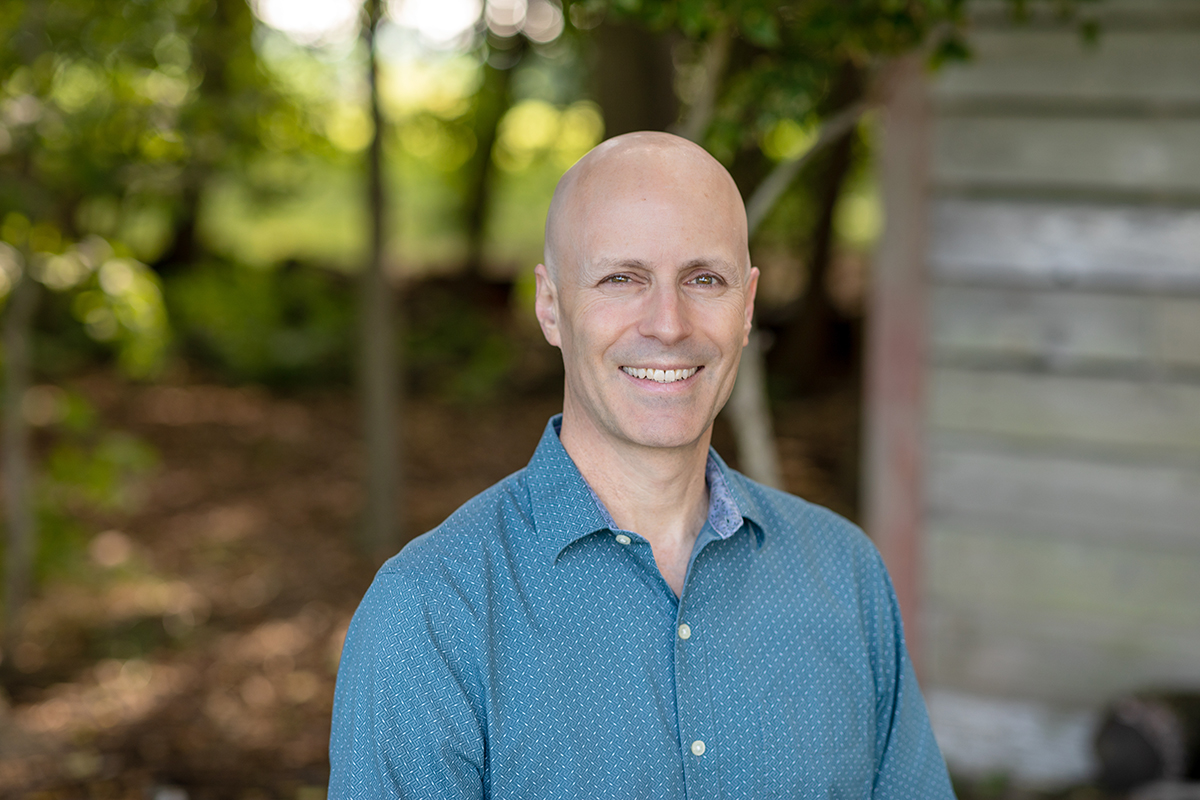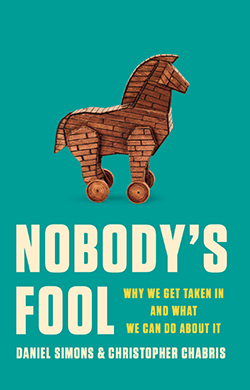
Illinois psychology professor Daniel Simons studies visual cognition, perception, attention and memory. He is the co-author, with Christopher Chabris, of "Nobody's Fool: Why We Get Taken In and What We Can Do About It."
Photo by Shannon Silfer
CHAMPAIGN, Ill. - According to two psychologists who study memory and perception, fraudsters tend to exploit the common habits of thought and decision-making that make us susceptible - and often oblivious - to their fabrications. Their book, "Nobody's Fool: Why We Get Taken In and What We Can Do About It," gives readers an overview of dozens of types of scams, hoaxes and strategies used by cheaters to deceive, and explains how to evaluate their ploys and avoid becoming a victim.
The authors, Daniel Simons, a professor of psychology at the University of Illinois Urbana-Champaign, and Christopher Chabris, a cognitive scientist who has taught at Union College and Harvard University, are already known for "The Invisible Gorilla," a book that explored the limits of human perception with studies showing that intense focus on one kind of stimulus can blind us to other obvious details of a scene.

Book co-author Christopher Chabris
Photo by Josiah Lewis
Their new book shows how common psychological habits can get us into trouble when we become the target of efforts to deceive us. The human tendency to trust seemingly familiar sources or information we have seen repeatedly, the assumption that consistency is a mark of integrity, our tendency to overvalue our assumptions without checking them carefully, and our reluctance to ask more questions - these and other traits can make us easier to fool.
"Nobody's Fool" gives numerous examples of the mechanisms driving fraudulent scientific reports, Ponzi schemes, phishing attacks, computer-assisted cheating, art forgery, and deceptive political and business practices. Such trickery can rob us of our access to reliable information, fair elections and, of course, our money.
All of these scams rely on common human psychological tendencies, the authors write. For example, we have a basic tendency to believe that what other people tell us is true.
"Truth bias is a feature, not a bug," they write. Most people are honest most of the time, so it makes sense that we do not question every statement from every person we encounter.
"But truth bias is also an overarching factor that plays a role in every con, scam and fraud," they add. This leaves us with a conundrum: "We need to believe others, but if we trust too much, we're in trouble - especially now."

"Nobody's Fool"
Book cover design: Chin-Yee Lai; Image: Michael Burrell/Alamy; Jacket © 2023 Hachette Book
The book urges readers to engage in a number of practices that will help them navigate murky waters and avoid being scammed. These include accepting less of what they're told - even by friends and close acquaintances - and checking the facts more often, especially when making big decisions. The authors urge readers to ask more questions, be wary when they're told something that perfectly fits what they believe and expect to hear, and pay attention to what isn't said or isn't included in demonstrations or presentations.
The authors also describe how easy explanations, perfect results or a lack of at least some random variation in the data offered to support a particular conclusion should all be viewed as red flags by anyone hoping to ferret out deceit.
Throughout the book, the authors provide examples of the sorts of questions we can ask ourselves - and others - to make sure that our habits are working for us rather than for people looking to cheat us.






